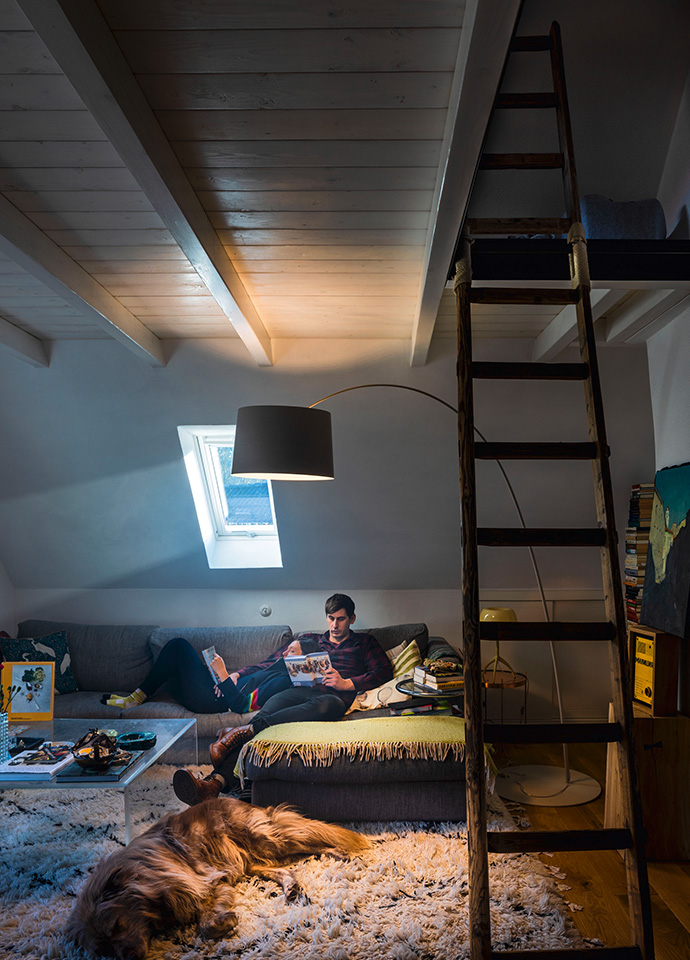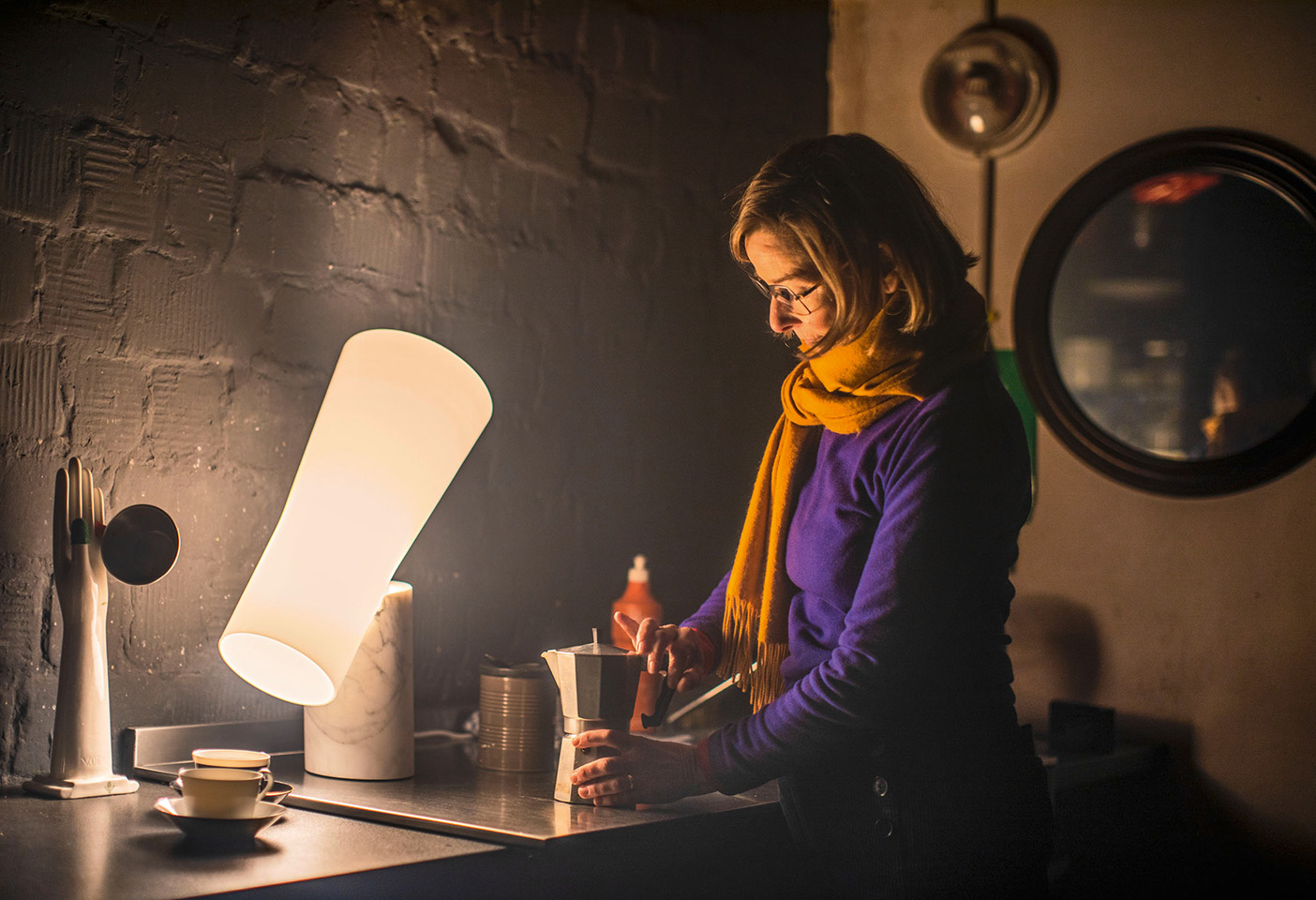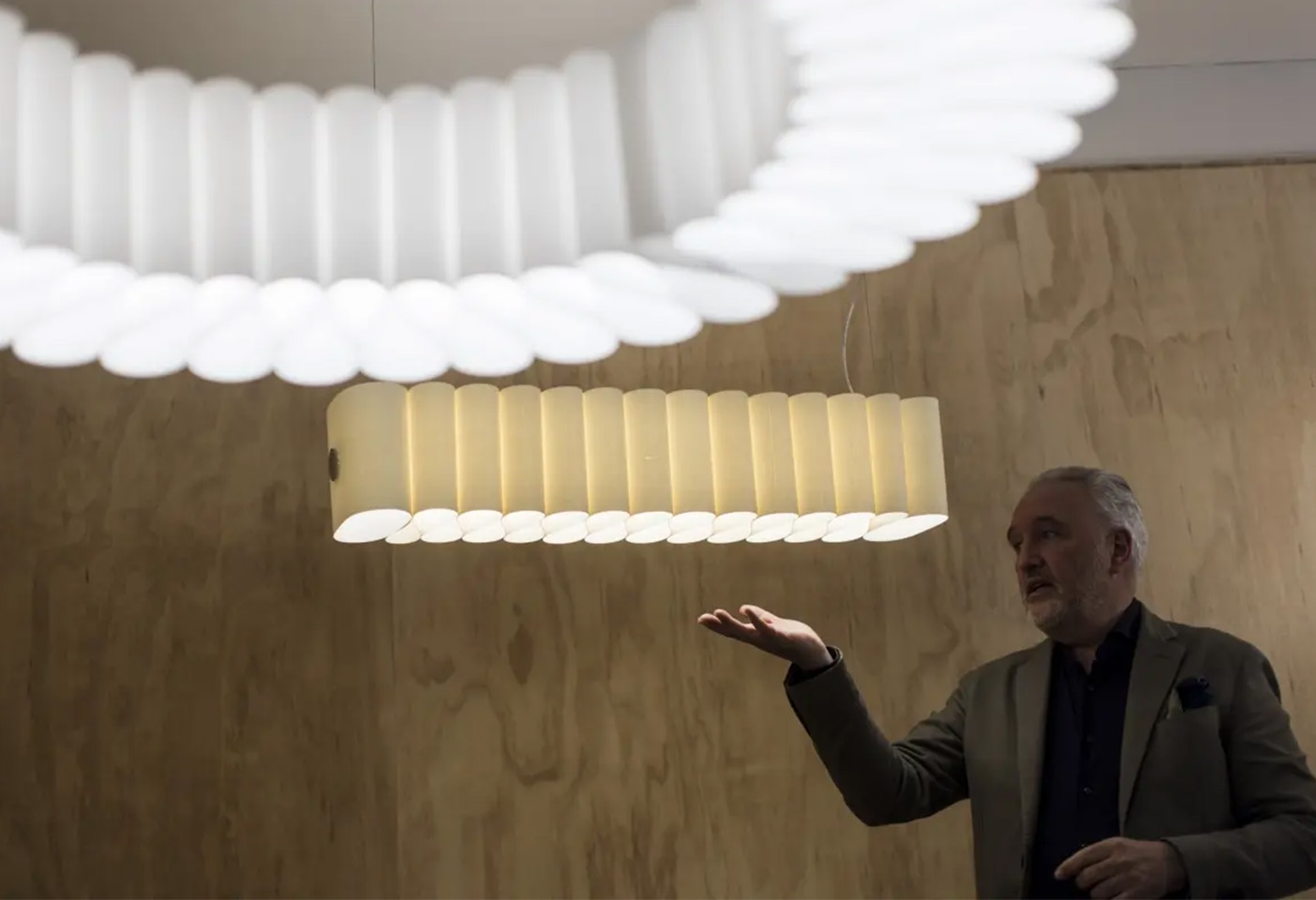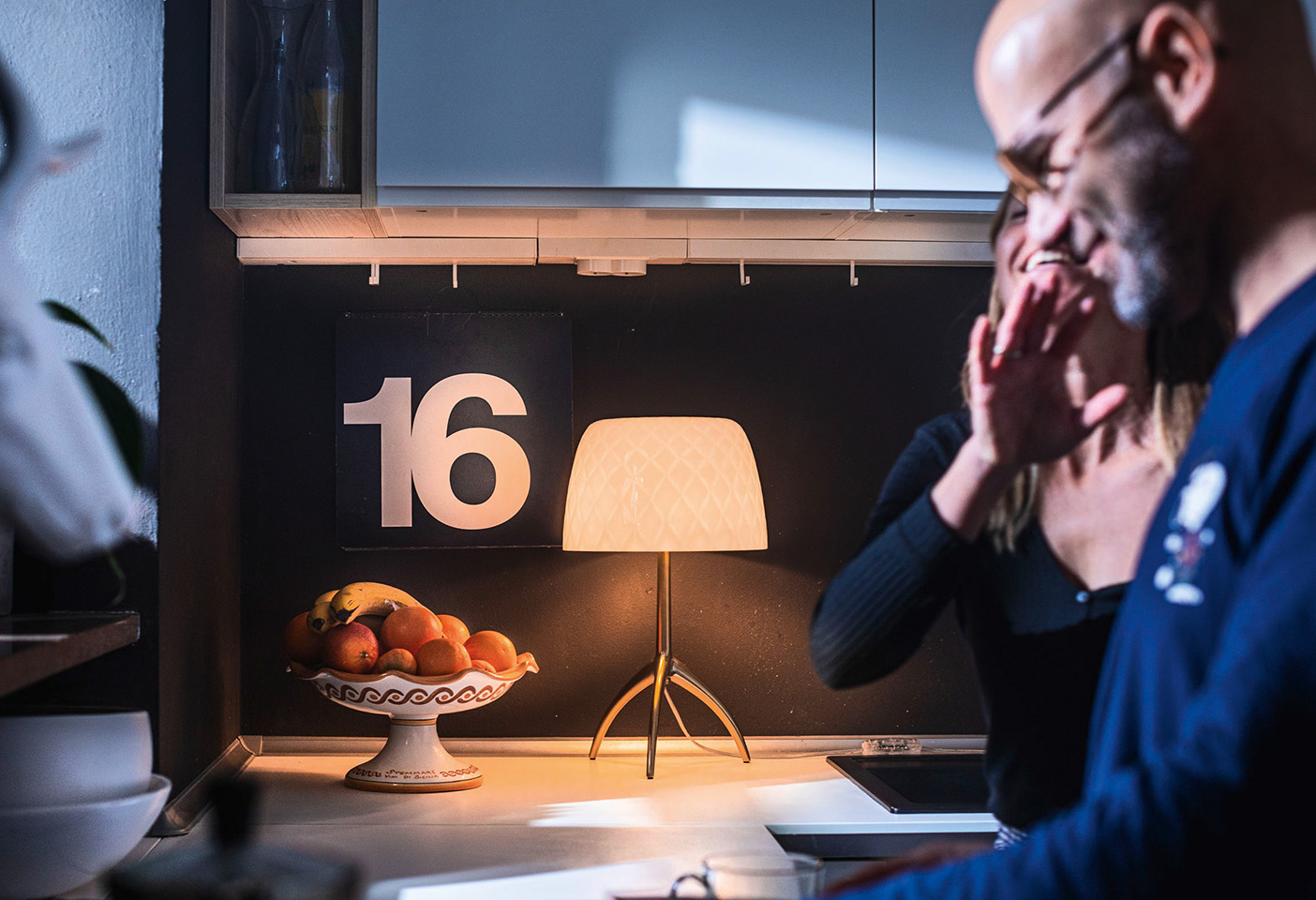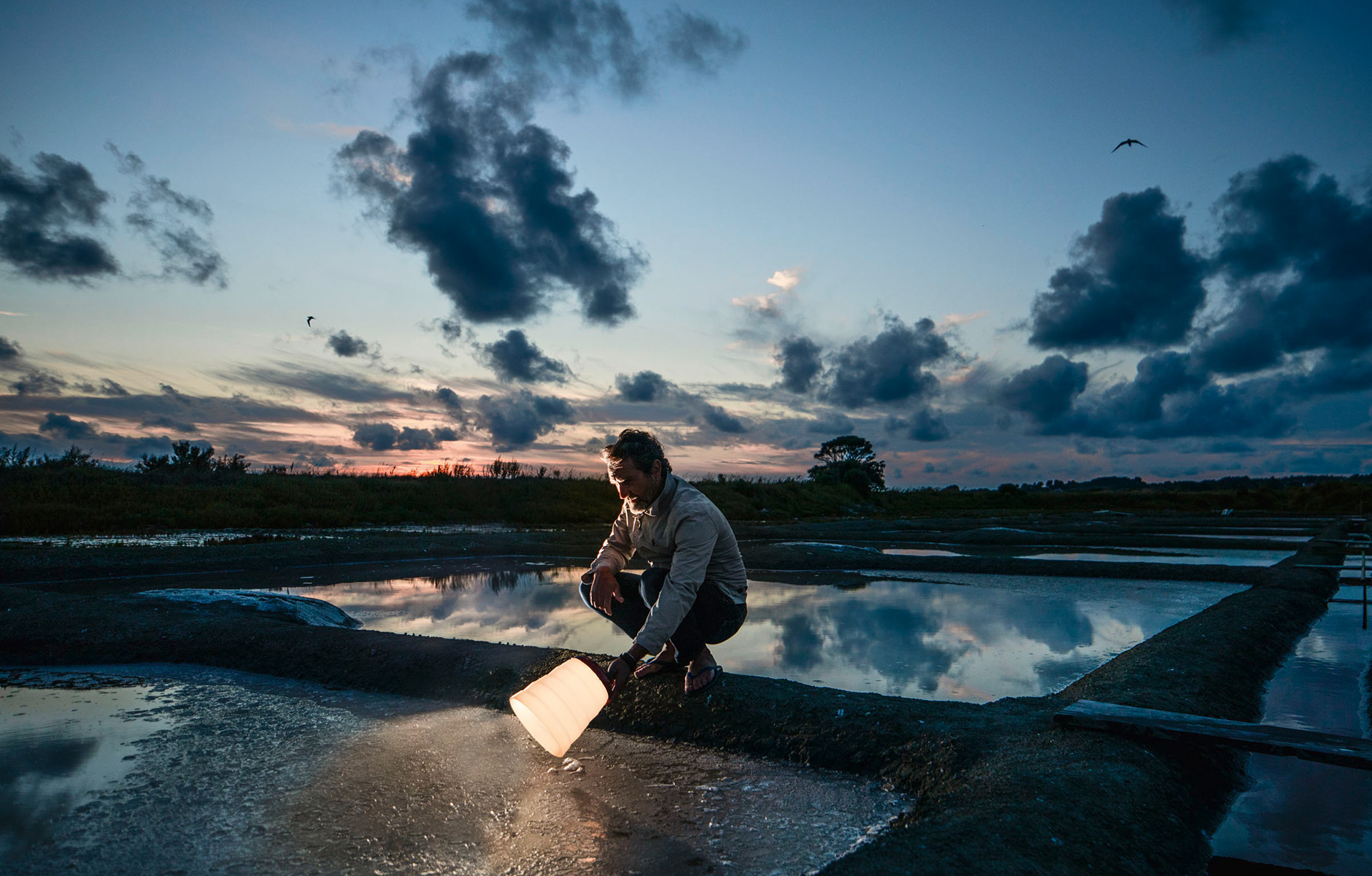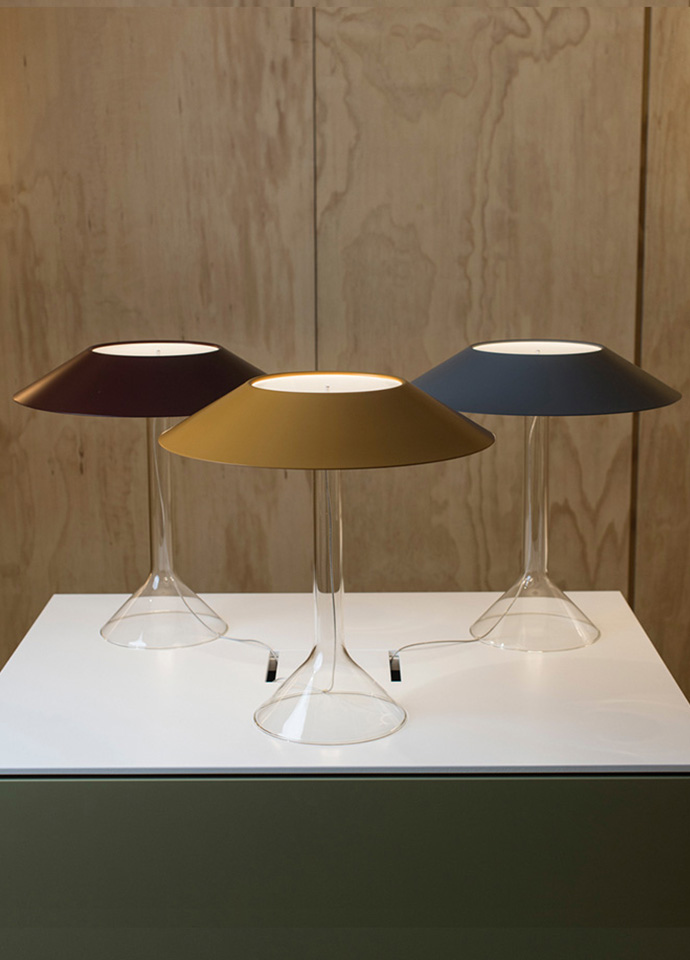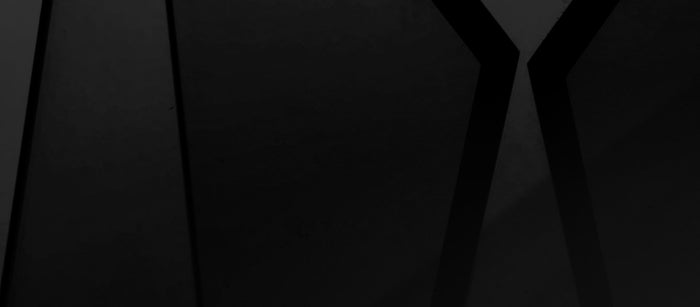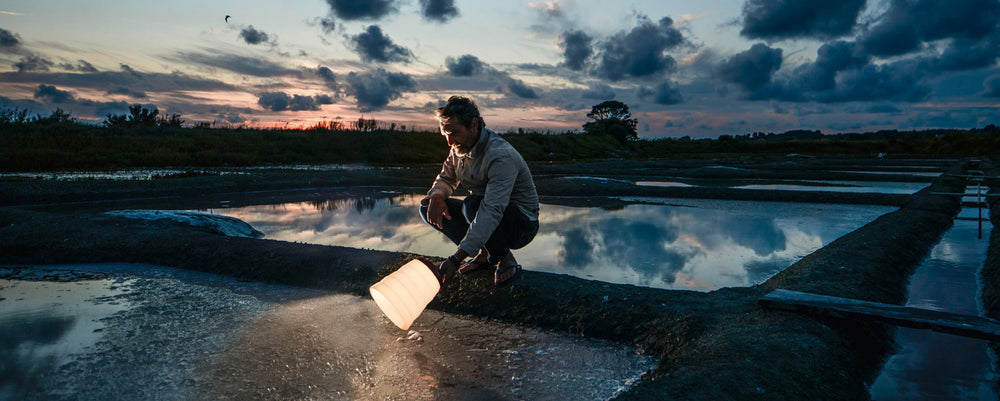
‘When Enzo Ferrari was asked about his favourite car, his response was the next one, because the process of working on the next one is fascinating,' remarks designer and head of Foscarini, Carlo Urbinati. A man who is also focused on exploring things that haven't been done before, Urbinati's world has all the energy and thrill of discovery. His thoughts overflow with possibilities: a surprising idea, material, manufacturer, or ways to share the collection, and he is always looking at how light can be shaped into something we fall in love with, even when we don't understand why.
In the second part of our series on celebrated lighting brand Foscarini, More Space meets Carlo Urbinati to chat about the heritage of Murano glass and breaking tradition, the late and great designer Rodolfo Dordoni, the story behind making the Aplomb collection and his favourite Milan Design Week launches, and the moment when you think you know what is going to happen with light, and then it surprises you.
What was it about Foscarini that first drew you in?
When I arrived in Murano, the island where for 1,000 years they have been doing one thing – talking, imagining, designing and producing glass, I was lucky being an ‘outsider’ because people shared with me some of their production secrets as they thought that being a foreigner I did not understand. I therefore wouldn’t be in competition with them. So, I had a fantastic opportunity to reach behind the production systems of a material that is so important for all lighting, and that was it!
I am interested in some of the big leaps you have taken.
When I joined the company in 1981, Foscarini was developing and selling special lighting systems only in Murano glass. When I say special, I mean site-specific pieces that were never produced twice. From day one we did not rely on our own production, so I could get in touch with different production facilities which turned out to be an enriching approach. We began dealing with a range of makers because we had different problems we wanted to solve. Nowadays, we no longer work only with blown glass, but also paper, carbon fibre, cement… any type of material that is needed to develop the concept. Being completely free with no material constraints, we can follow the ideas and find the best material and technology to develop the product idea in the best possible way.

The Caboche lamp designed by Patricia Urquiola for Foscarini. Photo c/o Foscarini 'Vite' campaign.
The Aplomb lamp collection is fascinating. What is the story behind the lamp that so beautifully shapes cement, a material usually found in buildings?
Aplomb takes its name from the plumb-bob, a tool used mainly in construction to determine the vertical direction of a specific point. In literal terms, Aplomb recalls the ability to remain completely straight thanks to its weight and perfect perpendicularity to the floor. Figuratively, Aplomb means self-confidence and therefore this is an object that reveals its true nature. The idea for Aplomb was only worth exploring if it was produced in cement. So we went to see the people who had spent a lifetime producing this material, they know everything about it, and with our idea and their knowledge we created something basically new. The major difficulty was to adapt a material usually used for large-scale buildings into an extremely delicate product that is small, extremely simple and finely detailed. The heart of the project was the leap in scale, because in this case we wanted to create a jewel in concrete. It doesn’t happen every time but most of the time, if we are lucky, working with designers and artisanal suppliers we create something new, something that did not exist before. We recently added colour to the concrete mixture which was a challenge to get the correct result with each different shape. By building up experience you learn a lot, and sometimes you find a way to make it easier and better.
Is there a kind of magic in those collaborations?
This is the reason I am doing what I do. The interesting part of the story is imagining something that is not on the paper when we receive a new design. We always push it to get more character, a different kind of light effect. That’s why we create problems in the beginning, we want more. We push the concept to be far away from normal. Normal is what everybody does. We are very lucky because we are working with the most fascinating material you could imagine, and that is light. The pleasure and emotion when you light up a new model you have been designing for so long. You think you know what is going to happen, but sometimes light gives more and surprises you. Light might be playing with the body of the lamp and it may be reflecting or creating different effects. We cannot imagine that on the paper, so it is the process that is interesting. When Enzo Ferrari was asked about his favourite car, his response was the next one because the process of working on the next one is fascinating. And this is also my answer when people ask me which is my favourite lamp. I always answer: the next one! When it is finished, it’s finished.

The Aplomb pendant lamp in finely formed cement designed by Lucidi & Pevere. Photo c/o Foscarini 'Vite' campaign.

The new Aplomb in colour. Photo c/o Foscarini.
'... we weren’t satisfied with running another catalogue without people in it, no life. That’s why the name of it is ‘Vite’ which in Italian means lives... New York is not the same light you find in Copenhagen or Naples... You can see the same lamp in so many different situations: an historic house and a country house, a small apartment in Shanghai or in a villa in the north of France. So you can understand a lot more about what a lamp by Foscarini brings to a space...'
Carlo Urbinati, President, Foscarini
Foscarini has had a long relationship with the designer Rodolfo Dordoni who sadly passed away earlier this year.
We met in 1988. Rodolfo was only one year older than me but he already had a lot of experience and he was able to understand more than just products. From a designing point of view, he is one of only two designers who brought us a product which is exactly as you see it now – the Lumiere lamp by Rodolfo and Filo by Andrea Anastasio. I remember Filo came out of a big bag that Andrea used to travel with. He always brings his stuff with him and just like Mary Poppins, he opens it up and something pops out. It was a few days before Christmas and, like Lumiere, it was perfect. Generally we love to work through the proposals together which was the story of Rodolfo’s recent Nile lamp. We were impressed by the dynamic connection of the two different materials, marble at the base which is very weighty and rich, in contrast with the effect of the blown glass on top.
The inventiveness of Foscarini is now told through the ‘Vite’ project. It’s very different to any other lighting campaign, what was the concept?
At the end of 2018, we weren’t satisfied with running another catalogue without people in it, no life. That’s why the name of it is ‘Vite’ which in Italian means lives. We decided to bring the lamps down from the pedestal where you always see design pieces represented in a very styled picture, where everything is under control. We wanted it to be true life and we wanted it to be different. To show many homes and the different ways people live: the spaces that belong to them, to share their history. They might have pieces of furniture that are not perfect if you judge them from a design perspective, but it is what makes their home special, unique and personal and we wanted to be part of it. Every place has got its own light. New York is not the same light you find in Copenhagen or Naples. So we wanted different situations and journeys into different spaces. In the end what connects all those stories is our lamps. You can see the same lamp in so many different situations: an historic house and a country house, a small apartment in Shanghai or in a villa in the north of France. So you can understand a lot more about what a lamp by Foscarini brings to a space, when it is lit and also when it is not.
'I am very happy about two new projects we developed with Rodolfo Dordoni. We are very proud of them. Very proud, because Chapeaux, one of the two, involved a long process... we are now offering a very nice Rodolfo piece that will respect what we have done together.'
Carlo Urbinati, President, Foscarini
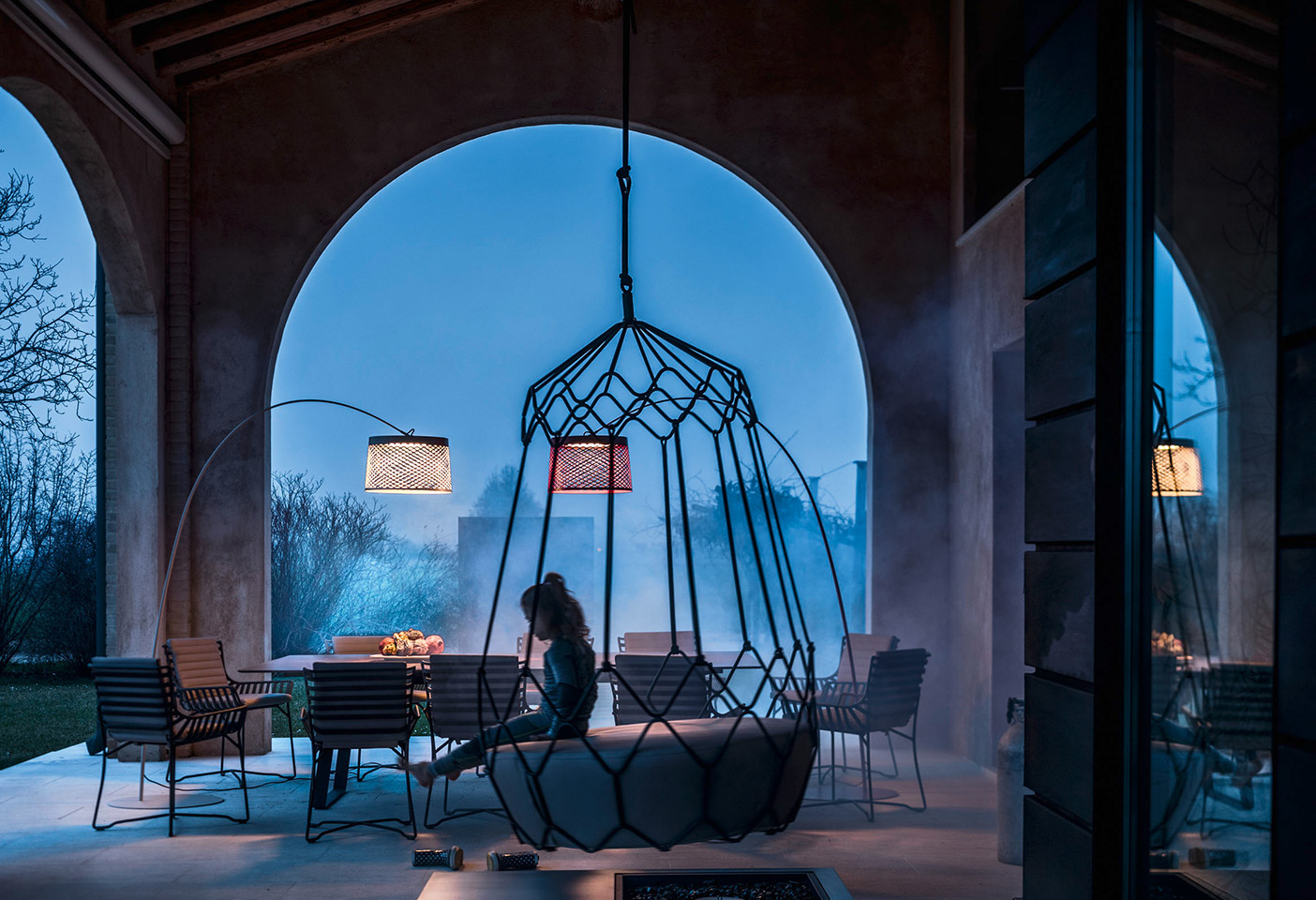
The Twiggy Outdoor lamp designed by Marc Sadler for Foscarini. Photo c/o Foscarini 'Vite' campaign.
What were your highlights in Milan this year?
Among the new products we presented, we introduced a concept that came from young Danish designer Felicia Arvid. Felicia studied fashion and she has a strong understanding of paper and fabric, she knows how to play with materials. We presented with her the Pli suspension lamp where the light source becomes a support structure. Like a needle crossing a thin sheet, it creates and holds a series of soft folds that drape and weave. It is a concept that combines form, material and structure in a single gesture. We use a lot of technology to make things work but we always try to keep it simple, we want people to connect with our lamps easily, to offer something that you fall in love with without knowing why.
When Ingo Maurer joined the Foscarini creativity hub last year, what did it mean to bring another iconic lighting brand into the collection?
Ingo Maurer has always been a star, not a Hollywood star, a star in the night sky. We knew him personally, we knew he was always completely free to imagine what is next. That’s how he got where nobody else was able to go in the '80s when he was sending out probably his most genius light called YaYaHo. Back then, nobody was working on low voltage with only two cables, he invented that. I am usually not interested in acquiring other companies but when it comes to Ingo, we were afraid that after he passed away everything would move away from his legacy, his approach, his philosophy. With my sons we decided to take it on. We have had the opportunity to guarantee ourselves the honour, and burden, of playing a part in ensuring that the story of Ingo Maurer continues to be talked about around the world. To support its development with the specific intention of preserving its traditions, values, and distinctive expressiveness. Now the challenge for us is to bring in some of our experience without changing it. It’s like we are a very good red wine and they are a very good white wine, you don’t mix them or you would ruin them both. We have to keep them absolutely separated because we want to maintain the legacy.
What is one project that really stands out for you right now?
I am very happy about two new projects we developed with Rodolfo Dordoni. We are very proud of them. Very proud, because Chapeaux, one of the two, involved a long process, exactly the opposite of Lumiere. We were very close to introducing that concept a couple of years ago, and at the very end there were things that didn’t work so we had some discussion with Rodolfo and he understood. So we started again. We created a new problem, we solved it with him, and we are now offering a very nice Rodolfo piece that will respect what we have done together.
Thank you so much for your time Carlo, it was a joy to talk with you.
Foscarini is available exclusively in South East Asia from Space – Australia, and Space – Singapore and Kuala Lumpur.
